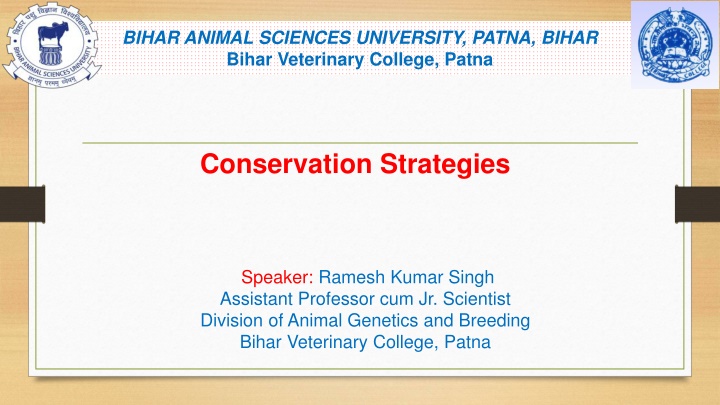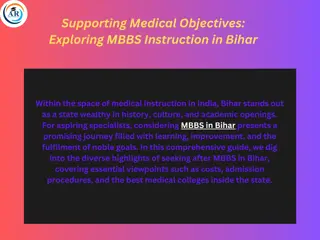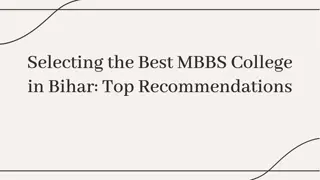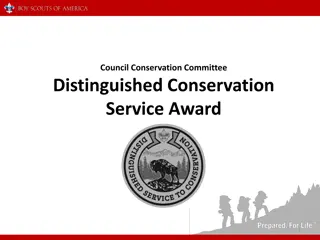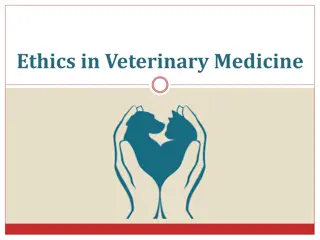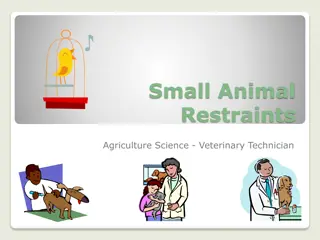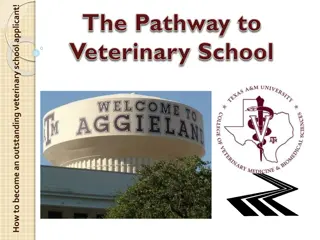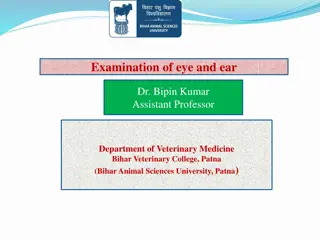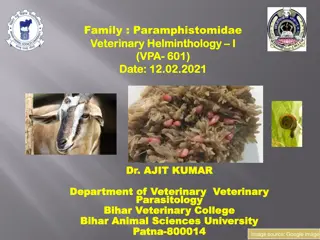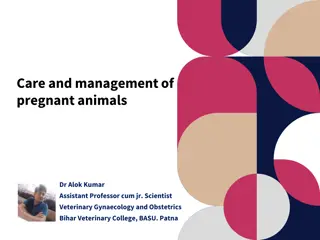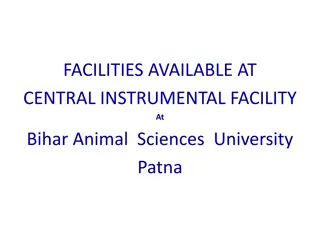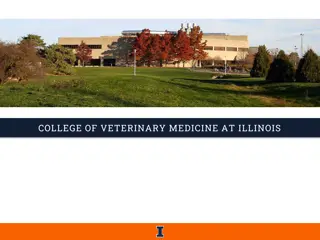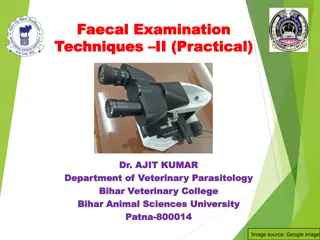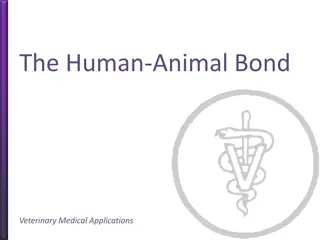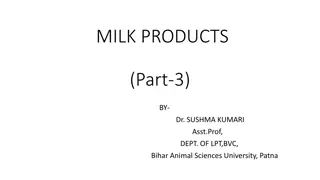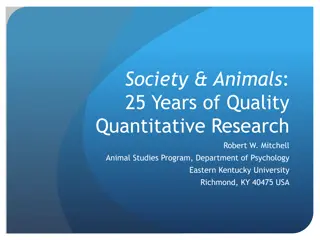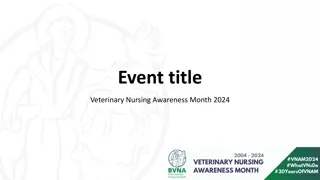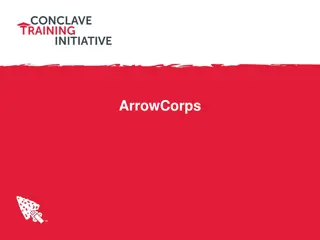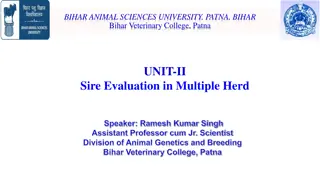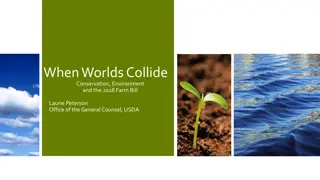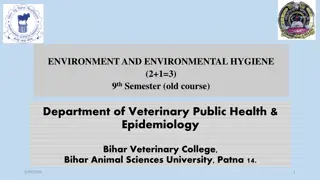Conservation Strategies in Animal Sciences at Bihar Veterinary College
Principles of conservation in animal genetics and breeding involve maintaining optimum population size, preserving unique traits, and selecting diverse stock. Methods include in-situ and ex-situ conservation, with in-situ conservation being preferred for its genetic variability and adaptability benefits. However, limitations such as high costs exist, and improving management practices in institutional herds is crucial for genetic improvement.
Download Presentation

Please find below an Image/Link to download the presentation.
The content on the website is provided AS IS for your information and personal use only. It may not be sold, licensed, or shared on other websites without obtaining consent from the author.If you encounter any issues during the download, it is possible that the publisher has removed the file from their server.
You are allowed to download the files provided on this website for personal or commercial use, subject to the condition that they are used lawfully. All files are the property of their respective owners.
The content on the website is provided AS IS for your information and personal use only. It may not be sold, licensed, or shared on other websites without obtaining consent from the author.
E N D
Presentation Transcript
BIHAR ANIMAL SCIENCES UNIVERSITY, PATNA, BIHAR Bihar Veterinary College, Patna Conservation Strategies Speaker: Ramesh Kumar Singh Assistant Professor cum Jr. Scientist Division of Animal Genetics and Breeding Bihar Veterinary College, Patna
Principles of conservation The conservation of AnGR should be based on following basic principles Population Size Stock should be maintained with optimum population size above the level of risk. Characteristics of Stock The stock for conservation should be of following types Viz. Pure form, Having special traits and Select diverse stock Environment conditions Maintain and conserve the locally adapted breeds and that to in some location. Maintain live animals providing the similar feeding, management and environmental conditions under which they had been traditionally kept. Breeding methods the genetic merit and diversity should be maintained using appropriate breeding programme.
Methods of conservation of AnGR In-situ conservation and Ex-situ conservation In-situ conservation It involves the maintenance of live animals in their adaptive environment and animal population continues to evolve and be developed for more sustainable use. It is of further two types Active In-situ conservation It is equivalent to breed development through animal breeding programme. Passive In-situ conservation It deals with maintenance of live animal s populations within their environment for the breeds which are at risk of loss
Advantages of In-situ conservation This is the best method for conserving a breed. Genetic variability should be maintained. Proper breeding plan for genetic improvement make the breed economically viable. This method of conservation gradually makes to adapt the changing environment.
Limitation of In-situ conservation In-situ cost involved in maintaining large herd / flocks is high. In-situ conservation can be done in better and scientific way at organized farms. The conservation can be done in field condition by forming breed societies.
Institutional herds The population size of animals maintained at institutional herds is too small for genetic improvement through selection. The genetic improvement of animal maintained at organised farms for conservation can be done by the followings Effective population size MOET ONBS & CNBS Improving the management and environment
Contd The Inbreeding and genetic drift have adverse effect on performances and fitness of animals which result due to small population size. The organised farms having nucleus of at least 100 breedable females can be used for selective breeding and conservation
Farmers Herds Individual farmers in India maintain small herd or flock of animal animals. So they are unable to kept bulls of high genetic merit. This forces them to mate their females with unselected bulls of low genetic merit available in and around they village. This result production of non-descript population. No data recording system is followed in farmer s herd / flock
These problems can be solved by Forming breed societies By covering the area of breed under herd Registration scheme for data recording. By giving incentives to the farmer s different ways An amount for keeping purebred animal Provision semen and A.I facilities Support price for products
In-situ conservation strategies By increase in fodder resources Improving economic efficiency of indigenous animals by selective breeding, better health coverage and providing balanced ration. To create public awareness about the local breeds for their suitability and special attributes under native condition.
Fodder resources strategies To maintain common grass land and other feed resources for grazing of animals Allowing practice rotational grazing Re-seeding of grass lands and controlled grazing Controlled grazing in forest. Practice of silvipasture and multitier vegetation
Ex-situ conservation The Ex-situ conservation is practiced for economically not viable animals under In-situ conservations. Otherwise it will be lost due to economic pressure.
In-vivo method It is Ex-situ conservation of live animals in small numbers at place away from the main breeding tract of the breed. Ex. organized herd of research station, Central State govt. farms, Bulls mother farms and Zoo and breeding park Major limitation of this method Small population size Increase in population size become uneconomical Breeding should be directed to increase performance over the year to make them self-sustainable Effective population size should be maintained
In-vitro method It is the storage of living cells for long period of time. It is done by Deep freezing of sperms and oocytes Deep freezing of embryos Storage of DNA Embryonic stem cells storage Somatic cell cloning
Objectives of In-vitro conservations Regeneration of endangered breed New breed development Supporting in-vivo populations Research for determining the effect of single major gene DNA studies and genome mapping
Strategies for conservation The conservation of livestock genetic resources in the country should have the broad based objectives with following lines of action A. National survey programme To determine demographical and geographical distribution of breed in their home tract. To characterize the different breeds of livestock species with respect to their morphological, productive and reproductive characteristics management practices To identify superior germplasm and rare variants within specific breeds To establish National Data Bank to store information of all AnGR To identify the breeds / types declining towards extinction Planning improvement and conservation programme
In-situ conservation programme Herd Registration programme should started for all the breeds with active participation of the farmers for which they need incentive and technical support Government farms should keep breeds those are not economical to farmers Breed societies should be formulated. The breed societies and voluntary organisation should be given financial and scientific support by central and state govt. for conservation of native breeds. The capacity of Govt. animal s farms should be increased with all types of infrastructural facilities to keep the indigenous breeds of livestock for their In-situ conservation
Contd Different breed should be adopted by different breeds organisation in their have tracts. Associated Herd Progeny Testing should be adopted genetic evaluation and conservation Goshalas having purebred animals should be supported by providing semen from bull mother station free of cost The crossbreeding should be restricted to non-descript population and low productive animals of the breed.
Ex-situ conservation programme India has good infrastructure for semen collection, storage and deep freezing It should be made mandatory to preserve excess semen doses The semen and embryo bank should be stablished Training programmes should be organised
Agencies for improvement and conservation programmes Department of A.H. and Dairying, Govt. of India SAU s and Veterinary Colleges State Animal Husbandry Department Non-Government organisation Private companies Others
